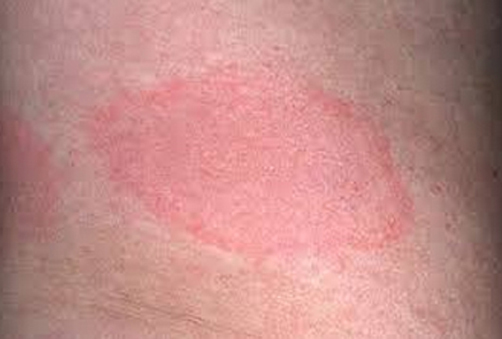Analyzing “rash selfies” helps early detection of Lyme disease

Johns Hopkins Medicine and Johns Hopkins Applied Research Laboratory (APL) researchers have shown that cell phone images of rashes taken by patients can be evaluated using artificial intelligence (AI) and deep learning (DL) technologies to more accurately detect and identify the erythema migrans (EM) skin redness associated with acute Lyme disease.
This can enable more reliable screening, more accurate diagnosis and earlier treatment, helping avoid the serious potential neurologic, rheumatologic and cardiac complications of advanced Lyme disease.
A report on the findings was published in the October 2020 issue of the journal Computers in Biology and Medicine.
APL scientists developed and tested several deep learning computer models to accurately pick out EM from other dermatological conditions and normal skin. The DL models were “trained” to discern the appearance of EM using images of non-EM rashes and normal skin available in the public domain, and clinical photos of patients with EM provided by the Johns Hopkins University Lyme Disease Research Center and the Lyme Disease Biobank, part of the Johns Hopkins University School of Medicine’s Division of Rheumatology.
There are more than 300,000 new cases of Lyme disease annually in the United States, and treatment is most effective if it is caught early.
Misdiagnosis of Lyme disease is common
Misdiagnosis, especially in the disease’s initial stages, is common because of several challenges. Blood tests detecting the presence of antibodies to Borrelia burgdorferi, the cause of Lyme disease, are often unreliable. Tests to directly identify the pathogen in lab cultures, by genetic analysis of blood or from a skin biopsy, can be problematic and aren’t readily available to clinicians. Using the EM rash as a screening method also is difficult because to the unaided eye, the rash can be easily confused with skin inflammations resulting from other illnesses.
To address the EM recognition problem, the Johns Hopkins Medicine researchers applied an AI and DL approach to analyzing cell phone images of rashes from patients suspected of having Lyme disease.
Evaluating the public domain images, the computer-enhanced image analysis system had an accuracy ranging from 72%, when choosing between EM and other rashes, to 94% when picking out EM from normal skin. For clinical images from patients already diagnosed with Lyme disease, the system could positively identify an EM rash 86% of the time.
“Being able to analyze the rash images using artificial intelligence and deep learning enables us to more accurately diagnose that a patient has Lyme disease, determine the stage of the illness and establish a more appropriate treatment plan,” says John Aucott, M.D., director of the Johns Hopkins Lyme Disease Clinical Research Center.
“So in the near future, if you notice a round, red skin rash, you can take a picture of it as soon as possible to share with your physician. That way, even if the rash disappears and you still have Lyme disease symptoms, your physician can make the correct diagnosis using our analysis technique.”
Now that the researchers have shown the potential of their EM rash digital analysis as a prescreening diagnostic tool for Lyme disease, they plan to further test and refine the technology in upcoming studies.
Press release source: Johns Hopkins Medicine




















We invite you to comment on our Facebook page.
Visit LymeDisease.org Facebook Page